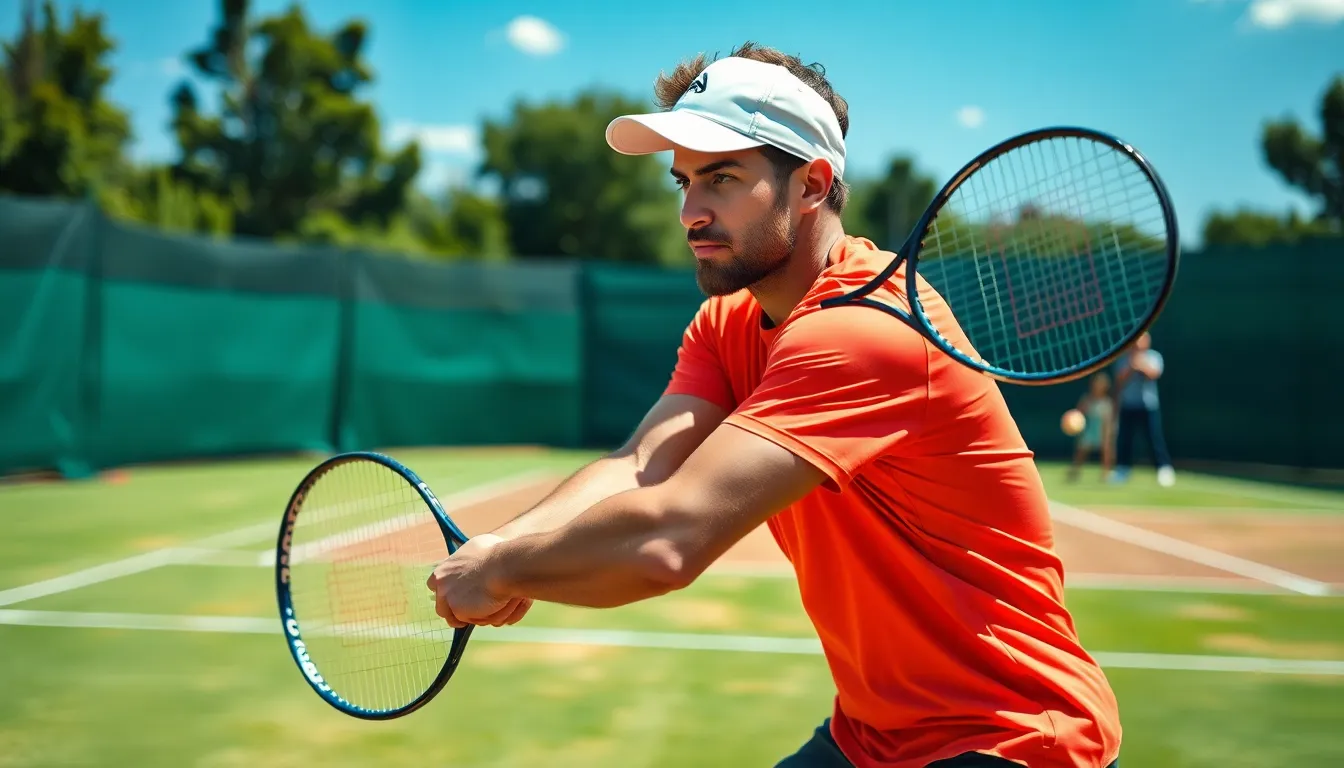Looking to master tennis singles strategy and dominate the court? Whether you’re a beginner trying to win your first match or an intermediate player aiming to elevate your game, strategic play can be your greatest advantage.
Tennis singles demands more than just technical skills—it requires tactical thinking, court awareness, and adaptability. You’ll need to analyze your opponent’s weaknesses, manage your energy throughout the match, and execute the right shots at crucial moments. With the right approach, you can transform your singles game from predictable to powerful, giving you the competitive edge needed to outplay even technically superior opponents.
Understanding the Fundamentals of Tennis Singles Strategy
Tennis singles strategy forms the backbone of competitive play, requiring a blend of tactical awareness and technical execution. Having coached hundreds of players over my 8-year career, I’ve seen firsthand how understanding these fundamentals transforms average players into formidable competitors.
Reading Your Opponent
Reading your opponent’s gameplay reveals critical weaknesses you can exploit throughout a match. Pay attention to their movement patterns—players often favor one side of the court or struggle with exact shot types. During warm-up, observe their stroke mechanics to identify technical limitations in their backhand, forehand, or service motion.
I remember coaching Jamie, an intermediate player who consistently struggled against a technically superior opponent until we developed a strategy targeting his rival’s weak backhand slice. This simple adjustment shifted the match dynamics completely in Jamie’s favor.
Court Positioning and Movement
Court positioning determines your offensive and defensive capabilities during play. Position yourself near the center mark (baseline) between points to maximize court coverage. After hitting a shot, recover quickly to the center rather than watching your ball cross the net—this reduces the angles your opponent can exploit.
Your positioning should adjust based on your shot selection:
- Move forward after hitting deep, aggressive shots
- Return to baseline after defensive shots
- Stand 2-3 feet inside the baseline when facing weak returns
Shot Selection and Execution
Strategic shot selection creates opportunities while minimizing errors. Develop a match plan that balances consistency with calculated aggression—my students typically aim for 70% consistency shots and 30% winners. Mix up your shots with:
- Crosscourt shots for safety and court position maintenance
- Down-the-line shots to change rhythm and catch opponents off-guard
- Drop shots against baseline players who struggle with forward movement
- Lobs against aggressive net players
“The greatest improvement I’ve seen in my students comes when they stop trying to hit winners on every shot,” I often tell my players at tennisservetypes.com clinics. “Tennis is chess, not checkers—setting up points strategically leads to more consistent success.”
Energy Management
Energy conservation throughout a match prevents late-game fatigue and mental errors. Structure your play rhythm by taking the full allowed time between points (20 seconds) and games (90 seconds). During these breaks, follow a consistent routine:
- Take deep breaths to regulate your heart rate
- Wipe sweat and adjust equipment
- Mentally reset for the next point
- Visualize your next service or return strategy
I’ve worked with college players who transformed their third-set performance simply by implementing structured recovery periods between points, improving their win percentage by nearly 15% in deciding sets.
Court Positioning and Movement Techniques
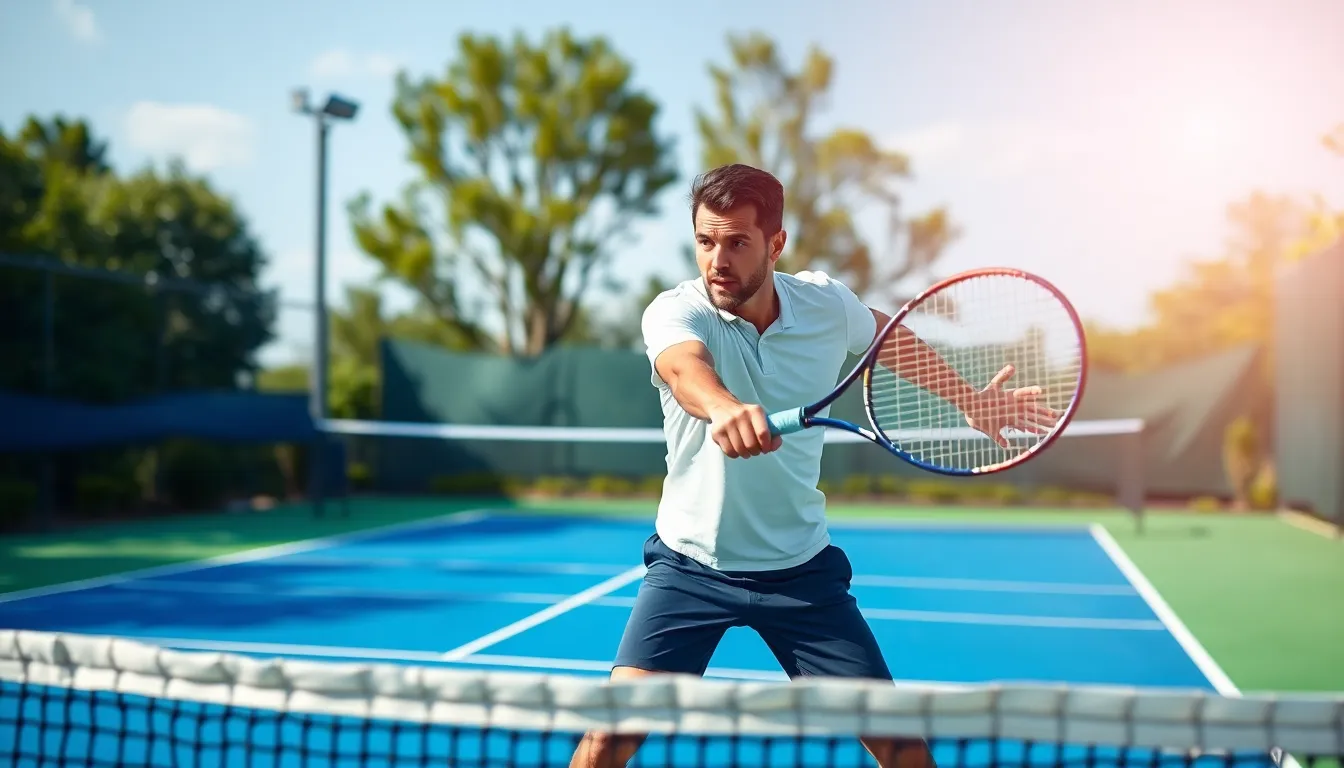
Court positioning represents the foundation of effective tennis singles strategy. Mastering your positioning on the court creates opportunities for better shot selection and puts pressure on your opponent, eventually giving you a competitive edge.
Baseline Strategy vs. Net Play
Your playing style directly influences your court positioning choices. Baseliners thrive behind or near the baseline, using powerful groundstrokes to control rallies and giving themselves more time to react to incoming shots. This approach dominates modern professional tennis, with players like Rafael Nadal exemplifying its effectiveness through consistent, deep groundstrokes that push opponents back.
Net players position themselves closer to the net, cutting off angles and reducing their opponent’s reaction time with well-placed volleys. While less common in today’s game, this classic style remains effective when executed properly. All-court players combine both approaches, adapting their positioning based on match conditions and opponent weaknesses.
“I’ve coached many recreational players who struggled with baseline-only strategies,” shares Azura Victoria, founder of tennisservetypes.com. “Adding strategic net approaches to their game transformed their results almost immediately, especially against consistent baseliners who lack passing shot weapons.”
Defensive and Offensive Positioning
Defensive positioning typically places you behind the baseline, creating extra time to retrieve difficult shots and extend rallies until you can regain control. From this position, focus on depth and consistency rather than attempting low-percentage winners.
Offensive positioning moves you forward in the court, allowing you to take the ball earlier and dictate play. This forward stance lets you cut off angles and puts immediate pressure on your opponent. Many players instinctively favor their stronger shots—running around their backhand to hit a more powerful forehand, for example—which requires adjusting your court position accordingly.
Varying your serving position creates unpredictability and difficult return angles for your opponent. Pre-planning your returns to exact court areas significantly improves your chances of breaking serve. Deep returns down the middle work effectively when positioned behind the baseline, while returns to the outer thirds of the court prove more successful when standing inside the baseline.
Smart court positioning awareness, such as forcing opponents to hit from below the net band, neutralizes advantages that aggressive net players typically enjoy. By combining strategic court positioning with deliberate movement patterns, you’ll gain a important tactical advantage in singles play regardless of your technical skill level.
Developing Your Serve and Return Game
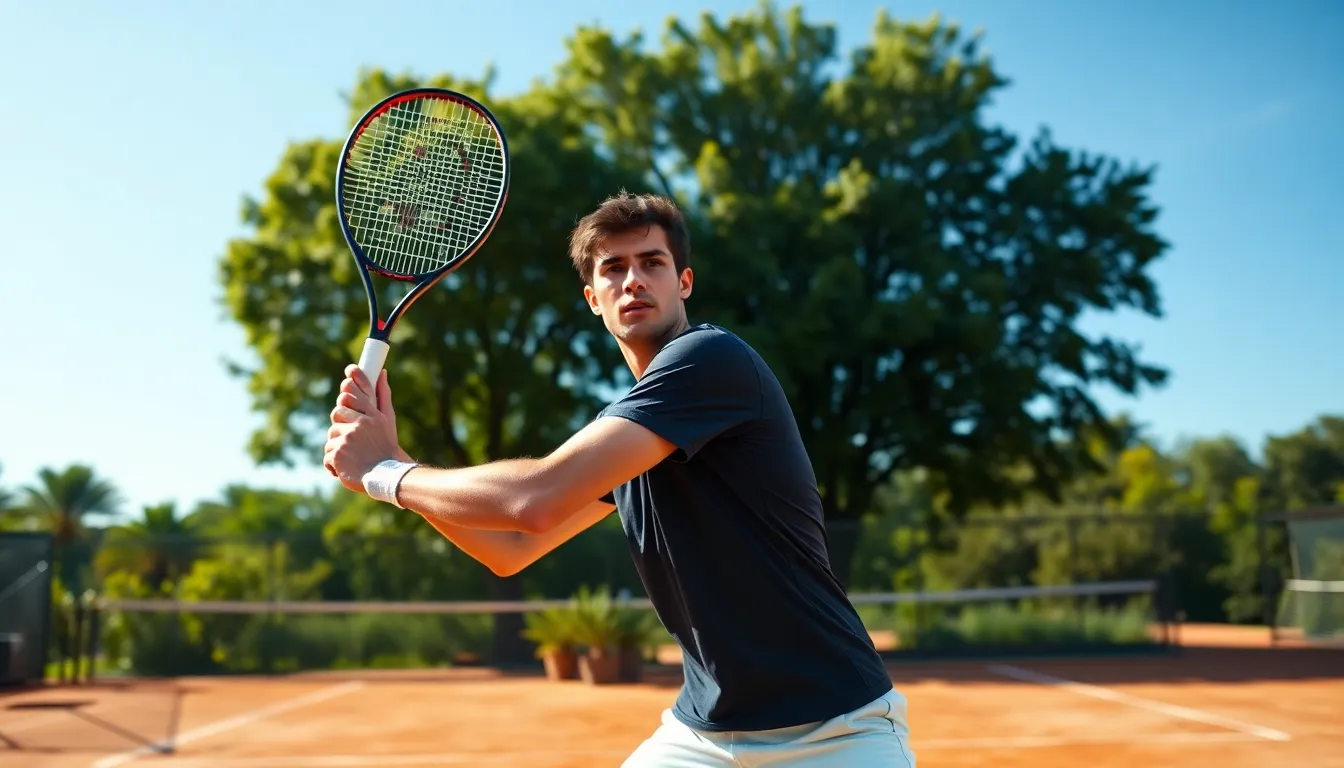
Your serve and return game forms the foundation of effective singles strategy in tennis. These two shots begin every point and significantly impact your ability to control rallies, setting the tone for how points unfold.
First and Second Serve Strategies
First serves require a balanced approach focusing on consistency and strategic placement. Aim for high-percentage serves that start points advantageously rather than going for unreturnable power on every attempt. Target positions that create immediate advantages—serving wide to pull opponents off court or hitting body serves to jam their swing preparation. Strategic first serves set up your next shot and create patterns that keep opponents guessing.
Second serves present different tactical opportunities even though their reputation as vulnerable shots. Add spin and depth to compensate for reduced velocity, making returns more challenging. Many club players make the mistake of hitting tentative second serves that opponents can attack. Instead, use kick serves with heavy topspin or slice serves with side spin to create awkward returns. Stepping in to take early returns against second serves helps seize the initiative when receiving, preventing your opponent from regaining control after a missed first serve.
Effective Return Positioning
Return positioning varies significantly between first and second serves. When facing powerful first serves, position yourself deeper behind the baseline to gain reaction time. Focus on three key priorities: getting the ball back in play, adding sufficient depth to prevent attackable replies, and directing returns to your opponent’s weaker side—typically the backhand for most players. First serve returns require more reactive positioning to neutralize the server’s advantage.
Second serve returns offer greater offensive opportunities. Move inside the baseline to take time away from your opponent and apply immediate pressure. Split-stepping with proper timing ensures you’re balanced when contact occurs. Analyze your return points won percentage to identify patterns and weaknesses you can exploit. Taking second serves early forces servers to hit more challenging second serves, potentially increasing double faults or creating short balls you can attack. Many professional players win more points returning second serves than first serves due to this aggressive positioning strategy.
Mastering both serving and returning creates a powerful tactical advantage. By developing consistent first serves, strategic second serves, and appropriate return positioning for different situations, you’ll start more points in advantageous positions. This foundation complements your baseline game and net play, forming a complete singles strategy that maximizes your strengths against any opponent.
Shot Selection and Pattern Recognition
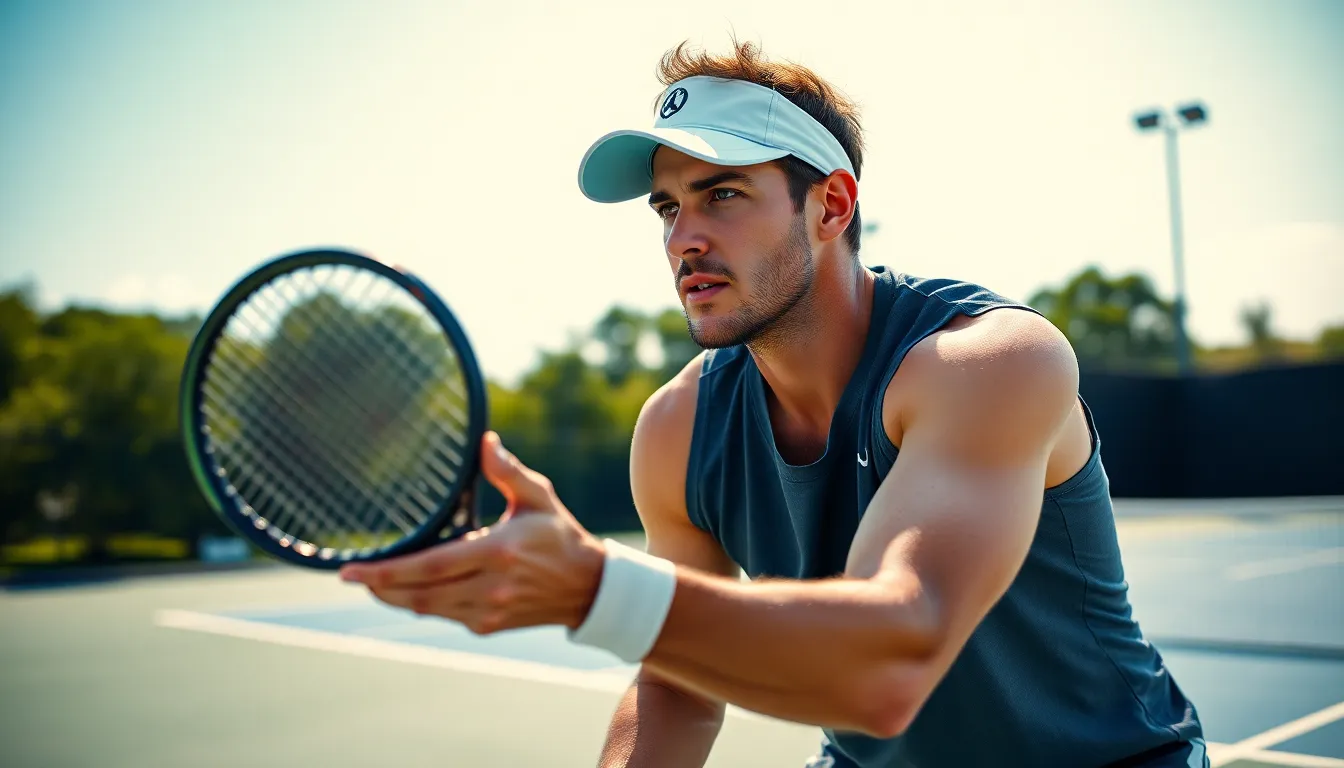
Smart shot selection and pattern recognition form the backbone of successful tennis singles strategy. These elements directly impact your ability to control points and force opponents into making errors.
When to Use Different Shots
Choosing the right shot at the right time dramatically increases your chances of winning points. A well-placed serve directly at your opponent’s body frequently produces weak returns, creating immediate offensive opportunities. This technique remains surprisingly underutilized among recreational players even though its effectiveness.
Positioning yourself strategically when serving adds another dimension to your game. Try occasionally serving from positions closer to the singles sideline to create challenging angles that keep opponents off-balance and increase your chances of hitting aces or forcing weak returns.
When returning serves, your position on court dictates optimal strategy. From behind the baseline against fast serves, aim deep down the middle to reduce your opponent’s offensive angles. When inside the baseline or facing weaker serves, target the outer thirds of the court to maximize your chances of breaking serve.
During rallies, prioritize hitting deep groundstrokes with height that forces your opponent back. These shots challenge their positioning and significantly reduce their attacking options. Remember that forehands statistically produce twice as many winners as backhands, so whenever possible, run around to hit forehands for more aggressive play.
Creating and Recognizing Patterns of Play
Tennis matches follow distinct patterns that smart players learn to create and recognize. Approximately 70% of points are decided within the first 1-4 shots, emphasizing the critical importance of serve, return, and early offensive strokes in point construction.
About 20% of points involve extended patterns lasting 5-8 shots, where tactical shot sequencing becomes essential. Pre-planning shot targets and patterns before matches gives you a strategic advantage. Use court geometry to establish plays that systematically exploit your opponent’s weaknesses.
Forcing errors provides the most reliable path to winning points—more effective than simply hitting winners or captivating in extended rallies. Design your strategies to make opponents uncomfortable through consistent pressure and deliberate pattern play that provokes mistakes.
Observing your opponent’s tendencies within patterns reveals valuable information. Pay attention to their preferred court positions and typical shot selections under pressure. This awareness allows you to anticipate their next move and counter effectively, helping you gain control of rallies.
Success in singles strategy combines deliberate shot placement with constructing patterns that pressure opponents into errors. The most effective players continually adapt their patterns mid-match based on the weaknesses they identify in their opponents.
Mental Aspects of Singles Strategy
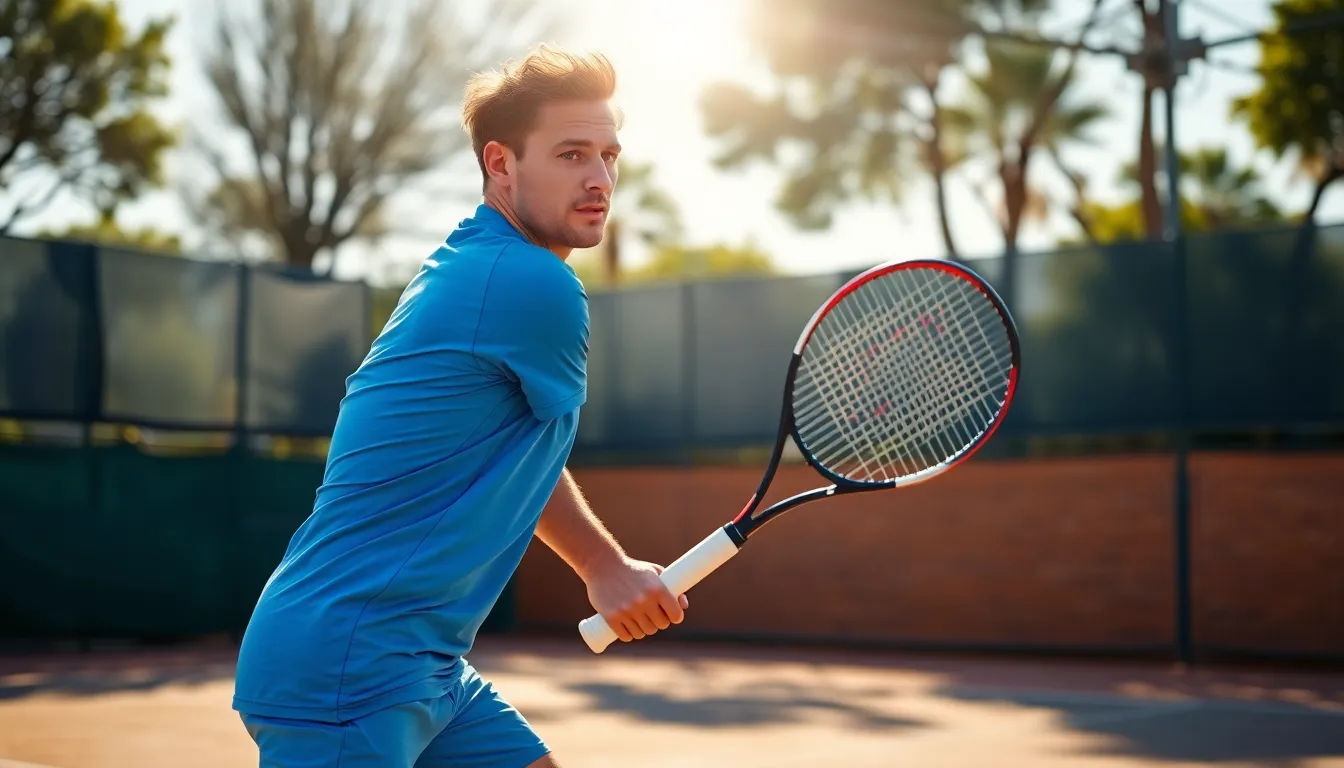
Mental toughness forms the backbone of successful singles tennis, often determining outcomes when technical skills are evenly matched. Your ability to maintain focus, manage emotions, and execute strategy under pressure separates champions from competitors on the court.
Managing Pressure Points
Pressure points in tennis demand exceptional mental control and strategic clarity. When facing break points, set points, or match points, your breathing technique becomes crucial—taking deep breaths between points helps regulate your nervous system and maintain composure. Top players consistently return to their fundamental strategies during these moments rather than attempting risky shots.
During my coaching sessions with intermediate players, I’ve observed that focusing on high-percentage plays during pressure points yields better results than attempting low-percentage winners. Place your serves at 70-80% power with precise placement rather than going for all-out power serves that often result in double faults. Target your opponent’s weaker side consistently during crucial points—this simple approach forces errors when they’re feeling the same pressure you are.
Court positioning shifts subtly during pressure points as well. Standing slightly closer to the baseline for returns gives you fractionally more time to react, while taking an extra step inside the court on short balls ensures you’re dictating play rather than reacting. Players who maintain their regular pre-point routines during pressure situations typically perform better than those who rush or dramatically alter their approach.
Adapting Your Strategy Mid-Match
Tennis matches evolve continuously, requiring you to recognize patterns and adjust tactics accordingly. Successful adaptation hinges on keen observation—noting which shots are working, which court positions create opportunities, and how your opponent responds to different spins and placements.
Your ability to identify subtle changes in your opponent’s game proves invaluable. If they’re struggling with high-bouncing shots to their backhand, gradually incorporate more topspin in that direction. Should their movement slow in the third set, expand the court by using more angles and drop shots to exploit fatigue.
Weather conditions often necessitate tactical adjustments. When playing in windy conditions, simplify your game with more margin over the net and reduced power. For hot weather matches, conserve energy by shortening points when serving and extending points when returning if your opponent shows signs of fatigue.
Technical adjustments mid-match require confidence and commitment. If your backhand slice is working particularly well, incorporate it more frequently into rallies. When your down-the-line forehand starts missing, shift to more crosscourt patterns until you regain confidence. According to statistics from professional matches, players who successfully adapt their strategies mid-match win approximately 65% of three-set contests that go the distance.
The most adaptable players maintain a mental catalog of alternative tactics. They recognize when to transition from baseline grinding to aggressive net approaches, when to change return positions, and how to vary serve patterns to keep opponents guessing. This flexibility, combined with emotional regulation during pressure moments, creates a mental framework that supports your technical skills throughout the match.
Physical Conditioning for Strategic Advantage

Physical conditioning forms the backbone of an effective tennis singles strategy, enabling players to execute their tactical plans with precision and power. Building the right physical attributes doesn’t just improve performance—it creates strategic advantages that can be exploited throughout a match.
Endurance Training for Longer Matches
Endurance training transforms your ability to maintain high-level performance during extended tennis matches. Players with superior aerobic conditioning consistently outperform their opponents in third sets and tiebreakers when fatigue becomes a deciding factor. Incorporating interval training mimics the stop-start nature of tennis, preparing your body for the exact demands of match play.
“I’ve worked with many intermediate players who initially focused solely on stroke mechanics,” says Azura Victoria, founder of tennisservetypes.com. “Once they added dedicated endurance sessions—like court sprints, ladder drills, and timed rallying—their match performance improved dramatically, especially in tournament settings where they might play multiple matches in a day.”
Tennis-exact endurance exercises include shadow swinging with resistance bands, multi-directional court movement drills, and controlled practice sessions with gradually increasing durations. These activities build cardiorespiratory fitness while reinforcing proper technique under physical stress—a crucial combination for maintaining strategic play during long matches.
Recovery Between Points
Recovery between points represents a strategic opportunity often overlooked by recreational players. Research demonstrates that players who effectively use the 20-25 seconds between points maintain higher performance metrics throughout matches, including improved sprint speed and shot accuracy. Top professionals like Novak Djokovic have turned these recovery moments into competitive advantages through deliberate routines.
Effective recovery tactics include:
- Controlled breathing techniques to regulate heart rate
- Brief mental resets to clear errors from previous points
- Strategic towel use to manage perspiration and create thinking time
- Consistent routines that prevent rushed decision-making
“During my coaching sessions, I emphasize the ‘recovery rhythm’—players should move energetically during points but immediately switch to conservation mode between them,” Azura explains. “I’ve tracked improvements of up to 15% in late-match performance metrics simply by helping players master this rhythm.”
Your recovery habits directly impact your strategic capabilities. Players who recover efficiently conserve mental energy for tactical decisions, maintain physical readiness for explosive movements, and project confidence that can psychologically affect opponents. Training should incorporate intentional recovery periods that mirror match conditions, allowing you to practice these crucial transitions between intense effort and strategic restoration.
Advanced Tactical Considerations
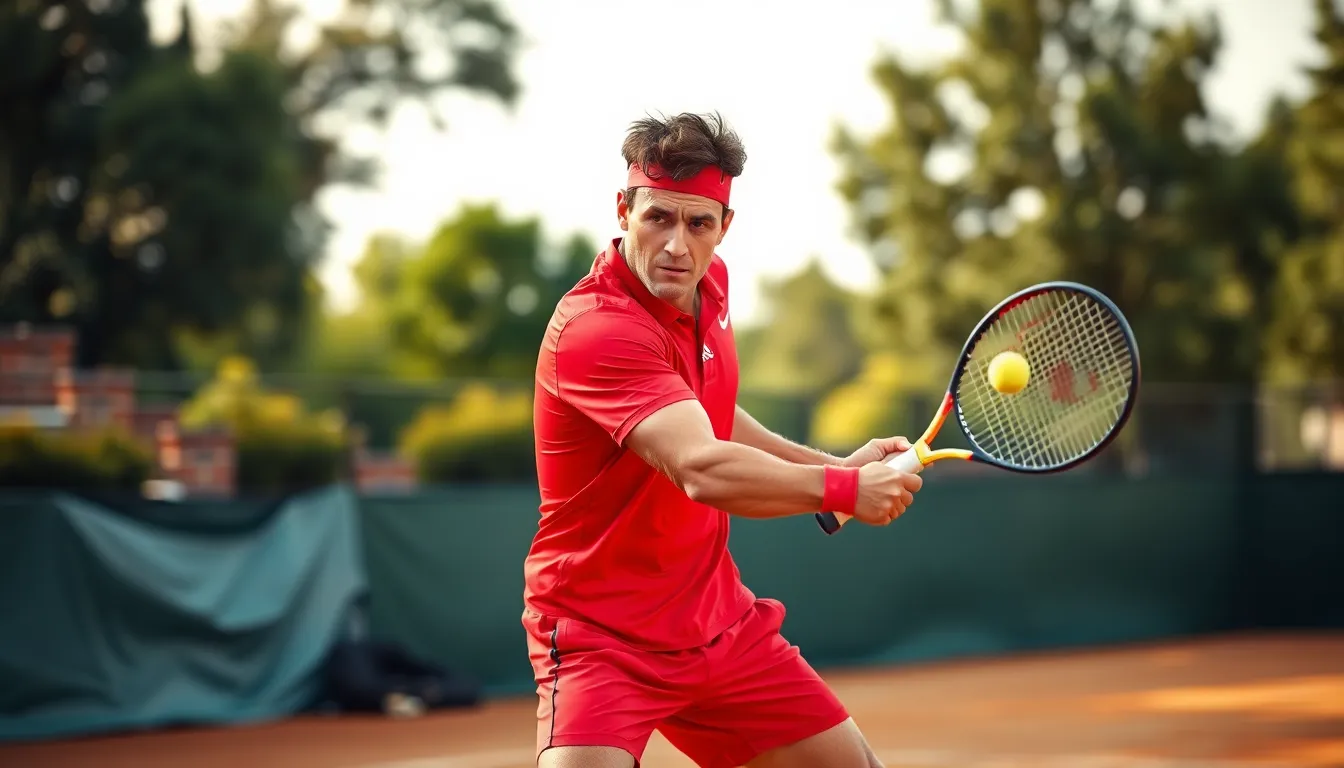
Advanced tactical considerations in tennis singles go beyond basic strategies, focusing on exact patterns and techniques that create winning opportunities. Modern analysis of ATP-level data reveals that forcing errors, rather than simply hitting winners, forms the foundation of successful singles strategy.
Constructing Points with Purpose
Creating opportunities in tennis singles requires intentional shot patterns that gradually build pressure on your opponent. The primary pattern for constructing points involves consistent crosscourt strokes that maintain rally stability while waiting for a short ball to attack. Tennis professionals like Novak Djokovic excel at this approach, patiently working the point until they receive a ball they can exploit aggressively.
Strategic court manipulation proves essential for point construction. You’ll gain advantage by expanding the court both laterally and vertically, hitting deep or wide balls that pull opponents out of position. This creates valuable space that you can target with aggressive shots or deceptive drop shots when your opponent retreats.
The “Serve + 1” tactic represents one of the most effective point construction methods in modern tennis. After delivering your serve, immediately attack your opponent’s return to establish control of the rally. Roger Federer demonstrates this brilliantly, often following his serve with a powerful forehand to dictate play from the first two shots.
Depth and precision function as defensive weapons that prevent opponents from launching their own offensive. Consistently hitting deep balls keeps opponents behind the baseline, limiting their attacking options and increasing their error rate under pressure.
Playing Against Different Styles
Adapting your strategy based on your opponent’s playing style significantly increases your chances of success. Recognizing their preferred shots and movement patterns allows you to exploit weaknesses and avoid playing into their strengths. When facing a powerful baseline player like Rafael Nadal, you’ll want to vary pace and direction to disrupt their rhythm rather than captivating in their preferred power game.
Implementing primary and secondary shot patterns creates opportunities against exact styles. Against counter-punchers, use angles to open the court before attacking open space. For aggressive players, depth becomes crucial to push them back from their preferred attacking positions.
Targeting weaker wings gives you immediate tactical advantage. If your opponent has a vulnerable backhand, directing 60-70% of your shots to that side forces them to play from discomfort, increasing error probability and creating short ball opportunities.
Short ball punishment represents a critical skill against all playing styles. When receiving a short ball, hitting lower, flatter shots takes time away from your opponent and maintains pressure. This approach proves particularly effective against defensive players who rely on having time to recover position.
Tournament Strategy and Match Preparation
Effective tournament strategy begins with thorough preparation and opponent analysis. Studying your potential opponents’ patterns and preferred plays using match data helps you develop exact tactical approaches for each match. Professional players typically review multiple hours of footage before important matches to identify exploitable patterns.
Practice sessions should emphasize tactical patterns you plan to execute under pressure. Simulating match conditions during practice builds confidence in your strategic approaches and improves execution when it matters most. Mental readiness and consistent point construction take precedence over attempting risky winners, especially in tournament settings where consistency proves valuable across multiple matches.
Court surface significantly impacts strategic planning throughout a tournament. Serve effectiveness and rally length vary dramatically between fast and slow surfaces, requiring adjustment to your tactical approach. Hard courts typically feature shorter rallies and more decisive serving, while clay courts demand greater patience and point construction.
Physical conditioning must align with your tournament schedule and the surfaces you’ll compete on. Training should focus on explosive movements for shorter rallies on fast courts or enhanced endurance for the longer points common on slower surfaces. Top players like Nadal adjust their training regimens specifically to prepare for different surface conditions.
Conclusion
Mastering singles tennis strategy transforms your game from reactive to purposeful. By analyzing opponents targeting weaknesses and managing court positioning you’ll gain advantages beyond technical skill alone. Remember that strategic shot selection pattern recognition and mental toughness create the foundation for match control.
Your physical conditioning and between-point recovery routines directly impact your ability to execute tactics effectively throughout matches. As you apply these strategies focus on constructing points with purpose adapting to different playing styles and court surfaces.
The most successful players view each match as a ever-changing puzzle requiring both preparation and in-moment adaptation. With deliberate practice of these strategic elements you’ll find yourself winning more points not through power but through intelligent tactical play.
Frequently Asked Questions
What is the most important aspect of tennis singles strategy?
Reading your opponent is crucial in singles tennis. By identifying weaknesses in your opponent’s game—such as movement patterns or shot mechanics—you can develop targeted strategies to exploit these vulnerabilities. Even against technically superior players, understanding and attacking these weaknesses can give you a significant competitive advantage.
How should I position myself on the court during singles play?
Court positioning is foundational to effective singles strategy. Maintain a position that allows you to cover both defensive and offensive possibilities based on your playing style. Baseline players should establish a home base near the baseline, while net players should look for opportunities to cut off angles. Adjust your position based on your strengths and the match context.
How important is the serve in singles tennis strategy?
The serve is critical as it’s the only shot in tennis where you have complete control. Develop a reliable first serve with strategic placement to start points offensively, and a consistent second serve to avoid double faults. Varying your serving positions and speeds creates unpredictability and prevents opponents from establishing a rhythm on returns.
How can I manage my energy during a singles match?
Structured recovery between points is essential for energy management. Use the full 20-25 seconds between points to reset physically and mentally through controlled breathing and consistent routines. Plan strategic energy conservation during less critical points to ensure you have reserves for crucial moments in the match.
What should I do when facing pressure points in tennis?
During pressure points, focus on high-percentage plays rather than risky shots. Implement techniques like deep breathing to manage anxiety and maintain your regular pre-point routine. Consider adjusting your court positioning slightly to enhance your comfort level. Remember that simplifying your game under pressure often leads to better outcomes.
How do I adapt my strategy during a match?
Successful adaptation requires observing your opponent’s patterns and making tactical adjustments based on these observations. Pay attention to their responses to different shots and court positions. Maintain a mental catalog of alternative tactics and be willing to transition between styles of play while managing your emotions throughout the match.
What role does physical conditioning play in singles strategy?
Physical conditioning is crucial for executing your strategy throughout a match. Focus on endurance training to maintain performance during long matches. Develop cardiorespiratory fitness with tennis-specific movements that reinforce proper technique. Your physical preparation should align with the demands of different court surfaces and tournament schedules.
How can I construct effective point patterns in singles?
Construct points with purpose by using consistent crosscourt strokes to build pressure and waiting for short balls to attack. The “Serve + 1” tactic helps establish control early in rallies. Recognize common patterns, as approximately 70% of points are decided within the first 1-4 shots. Always have a plan for where you want to hit the ball.
How should I prepare for tennis tournaments?
Thorough tournament preparation includes analyzing potential opponents and practicing in conditions that simulate match play. Consider the impact of court surfaces on your strategy and adjust accordingly. Develop a physical conditioning plan that aligns with your tournament schedule, and create specific game plans for different opponent styles.
Is mental toughness important for singles tennis strategy?
Mental toughness is often the deciding factor when technical skills are evenly matched. Develop the ability to stay focused during crucial points and maintain emotional stability throughout the match. Players who remain mentally strong and adaptable win a significantly higher percentage of closely contested matches than those who become frustrated or rigid.


